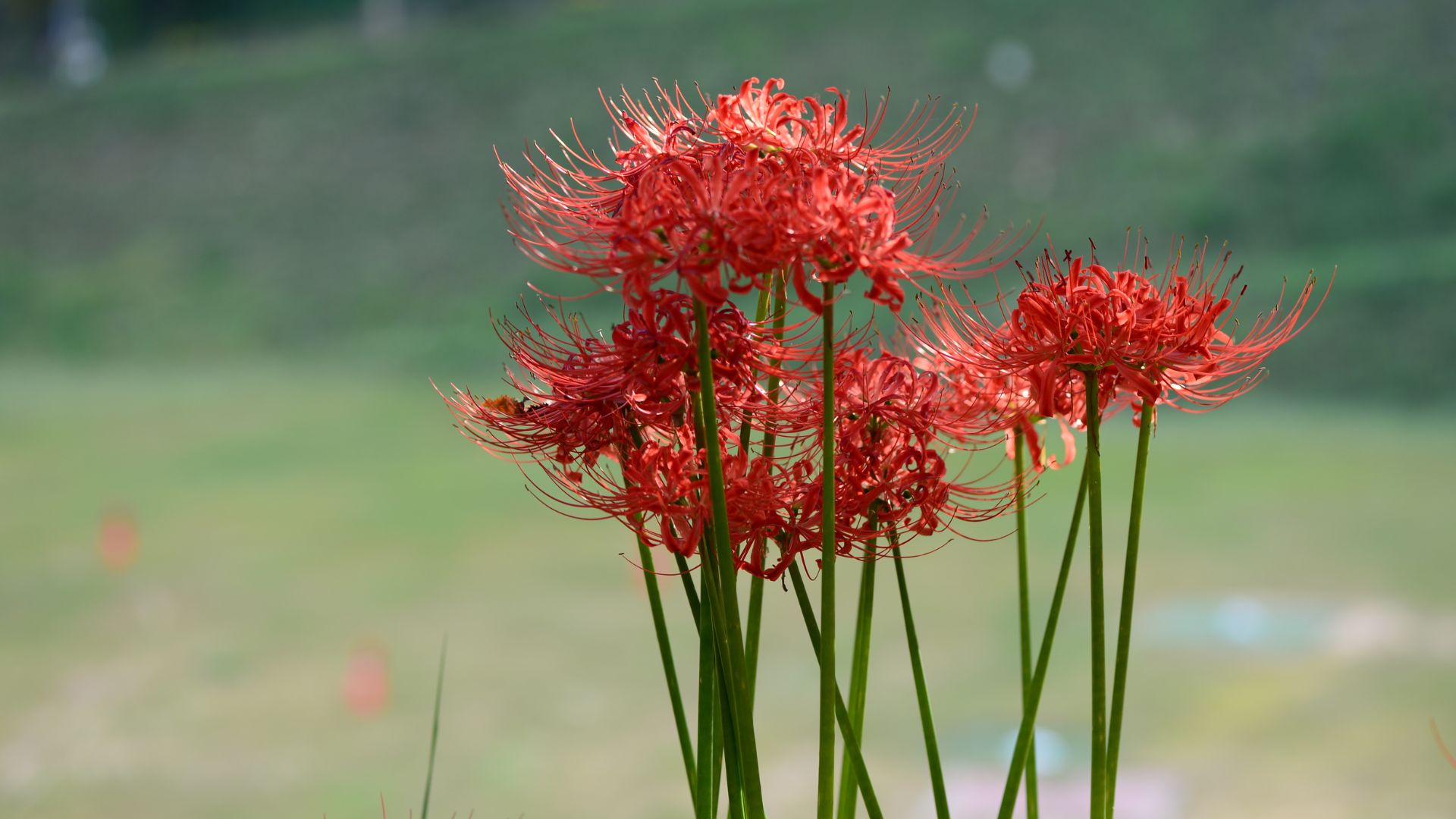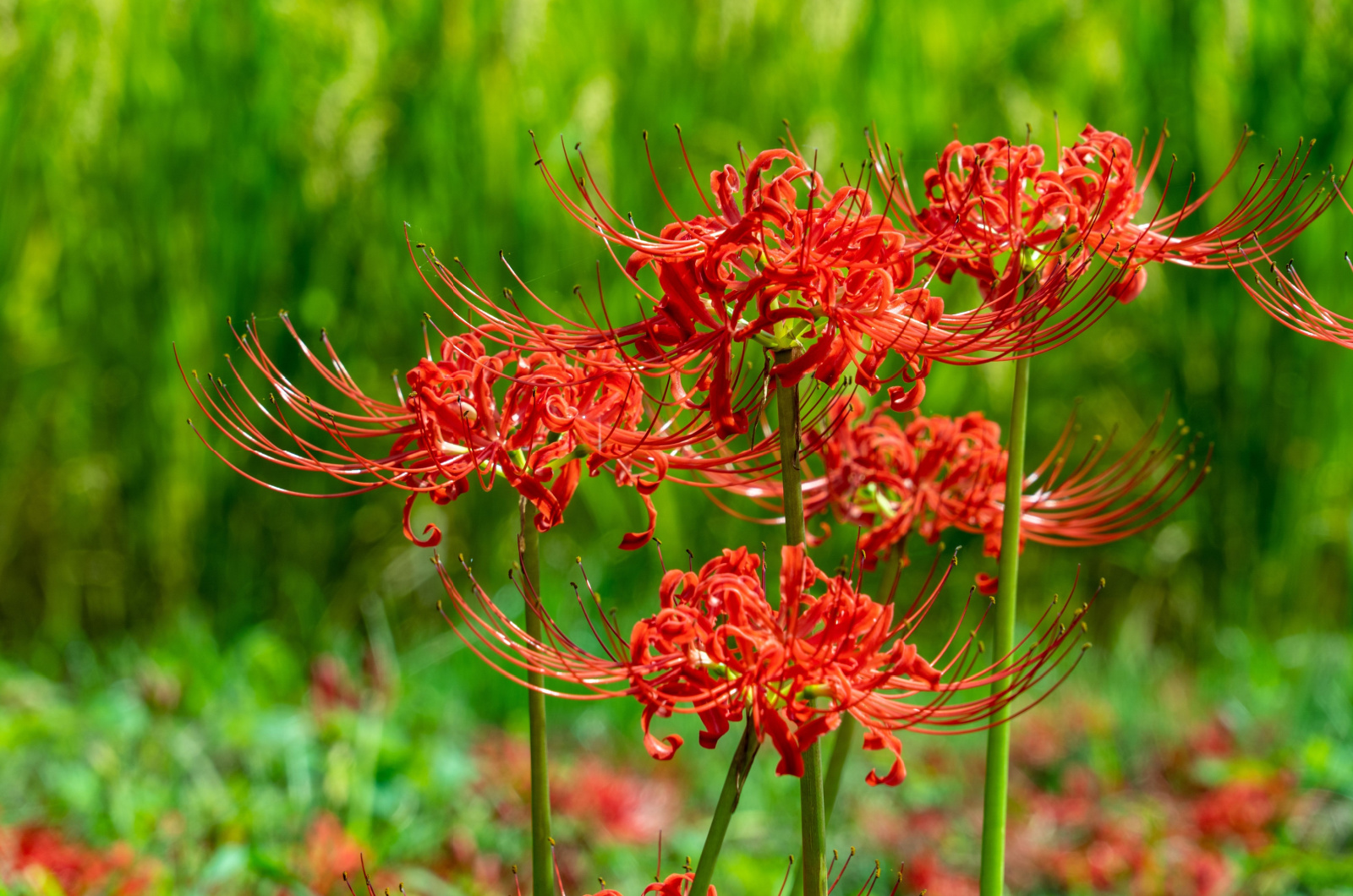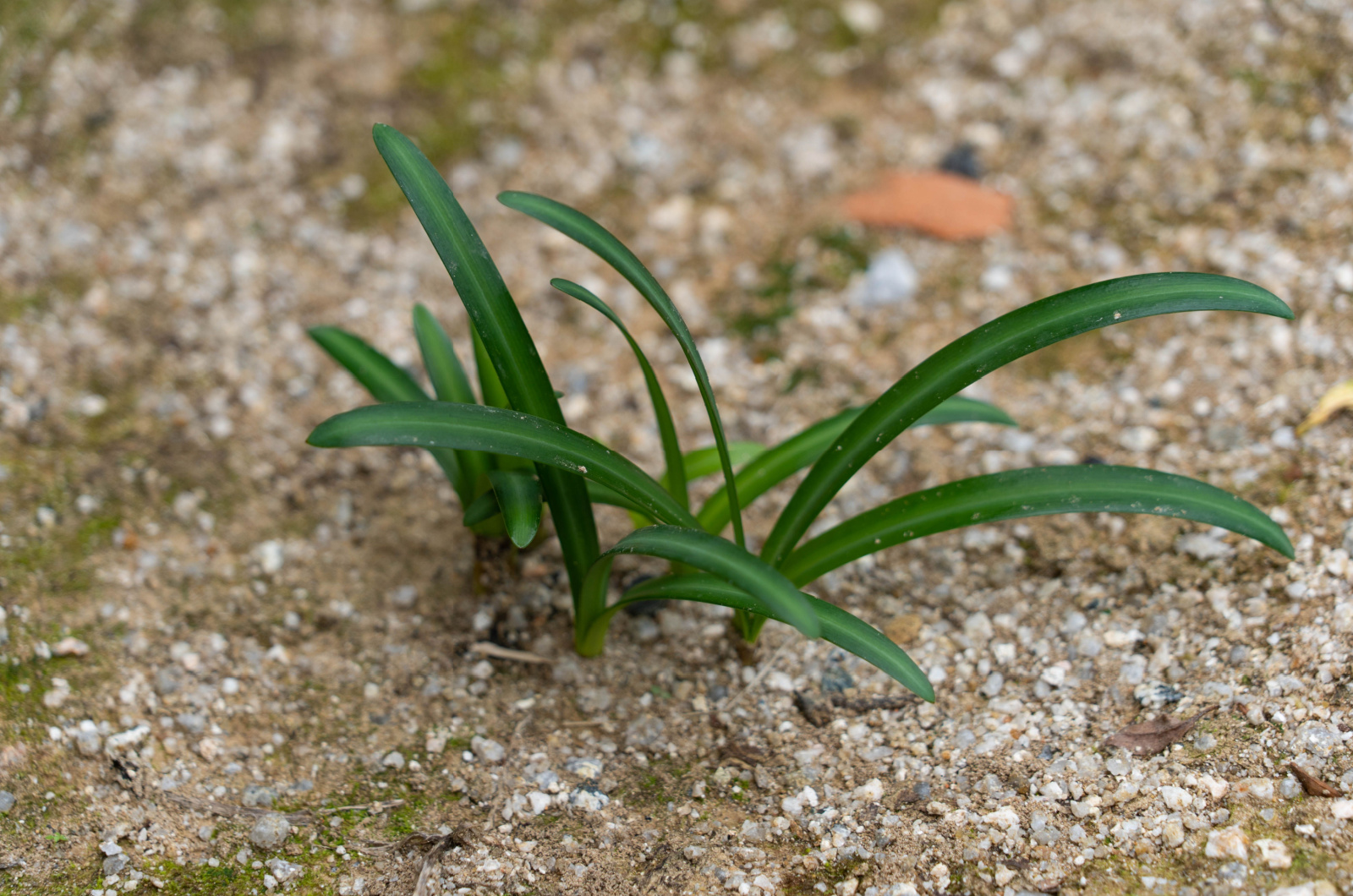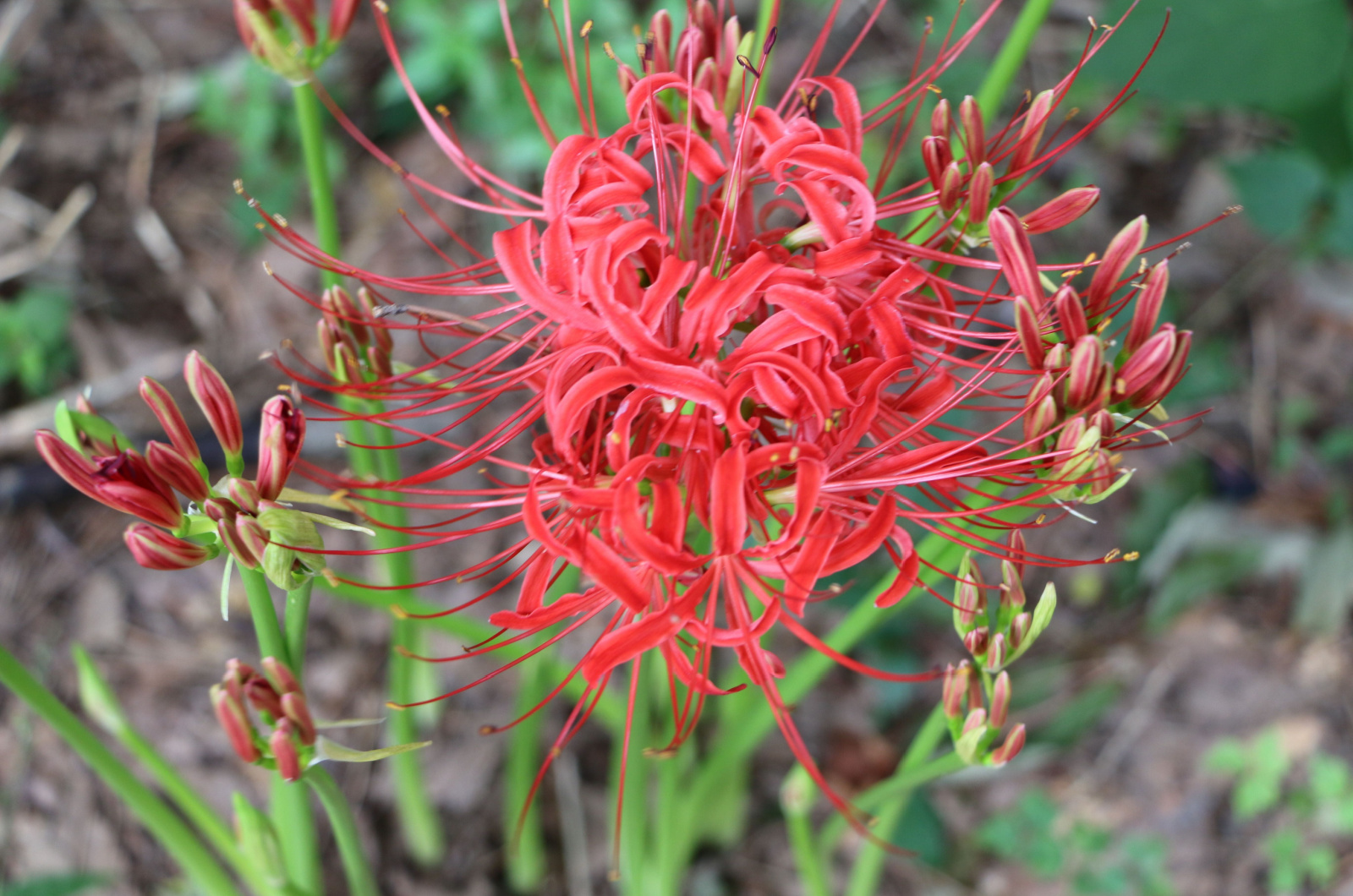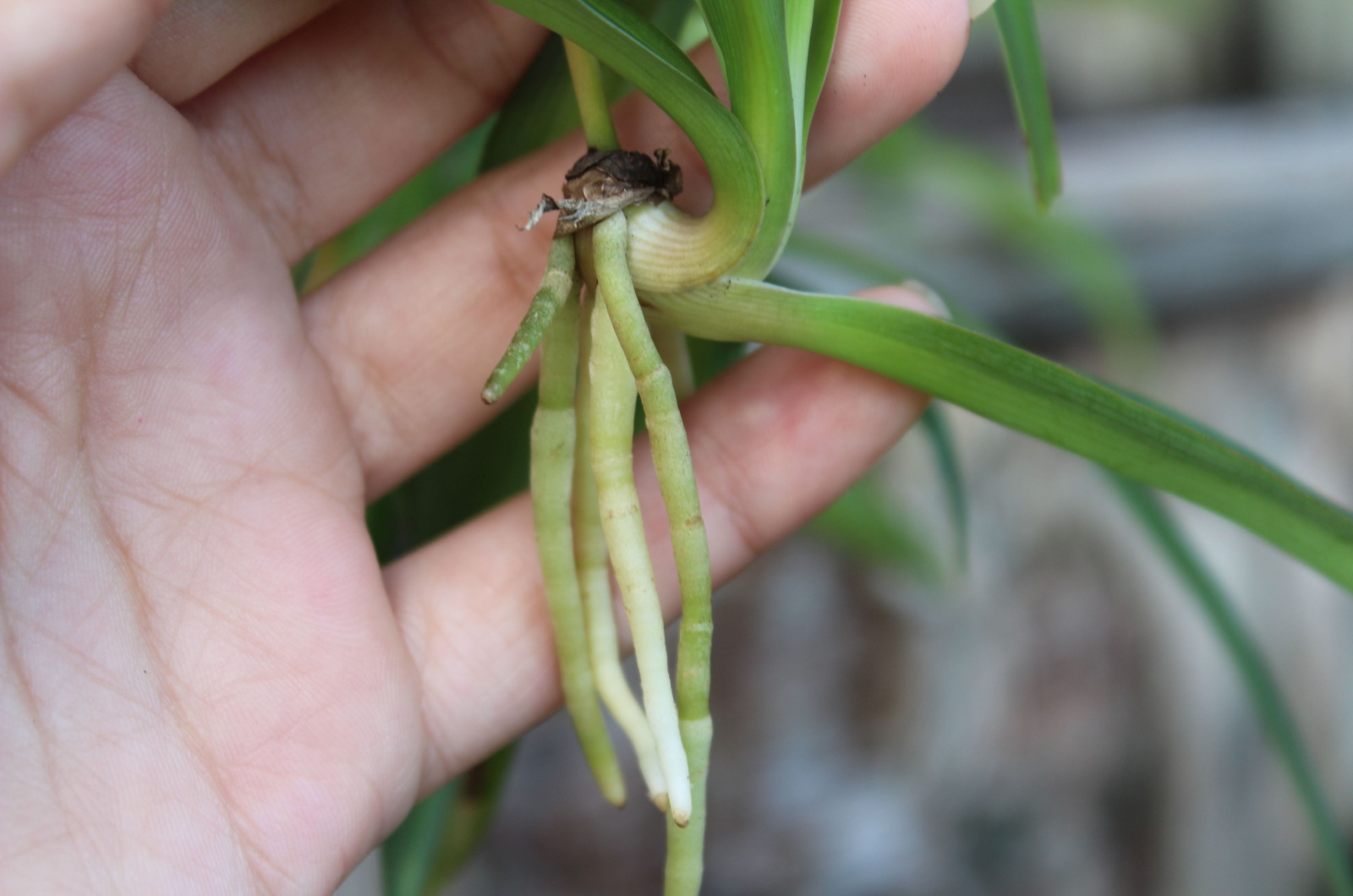If you want to add a unique touch to your outdoor space, spider lilies will do the best job. These unusual perennials are renowned for their spider-like appearance and peculiar growing season.
Beauty definitely isn’t the only thing a spider lily plant has to offer.
In this article, I’ll show you how to grow spider lilies and tell you all the other information you need to know about these adorable plants.
Let’s get started!
What Is A Spider Lily?
There’s one important thing I need to discuss about spider lilies before moving any further. You should know that the term spider lily doesn’t refer to one species only.
All the plants that go under this name belong to the Amaryllidaceae family but the difference is that varieties belong to different genera.
For instance, Hymenocallis latifolia is a species within the Hymenocallis genus and it generates white fragrant blossoms. H. occidentalis is another species from this genus and it goes under the nickname Southern spider lily.
Plants from the Crinum genus are also sometimes referred to as spider lilies and they grow well in moist areas.
The most common spider lilies found in US gardens are the red varieties scientifically known as Lycoris radiata, and this article will focus mainly on this species.
These are herbaceous perennials and they bloom year after year under optimal conditions. These plants get their name from the spider-like appearance of the blossoms.
Gardeners adore spider lilies because they can bloom when you least expect them. How is that possible? Well, one day the plant may have leaves and skinny spikes only, and the next day blooms simply appear.
This is the main reason why the plant has other nicknames such as surprise lilies or hurricane lilies.
These plants are native to Asian countries, i.e., Japan, Korea, China, and Nepal. However, they naturalized well and you can see them in many gardens in USDA zones 5 through 10.
Lycoris radiata plants typically reach 3 feet tall, making them perfect for smaller gardens.
Benefits Of Growing Spider Lilies
Remember when I said that beauty isn’t the only thing spider lilies have to offer? Here are some other benefits and reasons why this plant deserves a spot in your garden!
• It’s super easy to maintain and with little effort, you’ll get an abundance of spider-like blooms and a spectacular garden display.
• Pests typically don’t attack these plants, which is a relief since these nuisances can destroy plants. And guess what? Spider lilies can deter rabbits and squirrels from your garden!
• Diseases also don’t pose a threat to spider lilies, which is just another reason to love these plants.
• It makes perfect cut flowers and they’ll add a special touch of beauty to any flower arrangement.
• They make perfect houseplants so if you need a new member for your indoor collection, a spider lily is the perfect choice.
• And finally, the spider-like blooms attract hummingbirds, bees, and butterflies so if you want to create a wildlife-friendly garden, don’t look further than a spider lily.
When And For How Long Do Spider Lilies Bloom?
Most plants finish blooming in late summer but guess what? That’s when the spider lily starts blooming! You can expect to see the first blossoms in August and the plant will keep blooming through the early fall.
If you don’t see any blooms in the first year, don’t worry, there is most likely nothing wrong with your spider lily and it just needs more time to establish itself. Remember, it’s not called a surprise lily for no reason!
Each spider lily blossom typically lasts for a few weeks before it fades and the plant goes dormant. The plant won’t rebloom so make sure to enjoy the blooms while they last!
The Ideal Growing Conditions
Light
These plants aren’t finicky when it comes to light levels. They perform well in both sunny and partially shaded spots.
If you want an abundance of blossoms, it’s better to ensure some shade, especially during hot summer days.
Interestingly, spider lilies grown in partial shade may display blooms earlier than those grown in full sun.
The Best Soil Type
Lycoris radiata plants grow best in soils with good drainage. The roots can suffocate quickly if they sit in standing water; they’re highly susceptible to root rot disease.
The soil also needs to be rich in organic matter, so if you have poor soil in your garden, I recommend amending it with rich ingredients, such as compost.
If you grow any other spider lilies, such as those from the Crinum genus, it would be best to ensure more moisture-retentive soil.
Watering Schedule
Even though spider lilies aren’t thirsty plants, they’ll benefit from regular watering during the growing season.
Dormant plants don’t generate new growth so make sure to cut back on watering during the colder months.
A rule of thumb is to give your Lycoris radiata an inch of water per week.
If you grow Crinum varieties, then you’ll need to water more often; a key to healthy plants is consistently moist soil.
Guide To Planting Spider Lilies
You can plant your Lycoris radiata either in spring or early fall. Nurseries typically sell bulbs and you can plant them in the ground or in containers.
Let’s see both ways!
In-ground Planting
Here are the steps for planting spider lilies directly in the soil.
1. Select a sunny spot in your garden and check if the soil has good drainage. You can improve your soil by adding compost to enhance drainage and boost nutrient levels.
2. Make holes for your spider lily bulbs, ensuring each one is about 8 inches apart.
3. Place the bulbs in the ground but make sure that the pointy ends face upward.
4. Add more soil but make sure the surface of the bulbs isn’t covered.
5. Water your newly planted Lycoris radiata bulbs thoroughly.
Container Planting
If you don’t have a lot of space in your garden, you can plant your spider lilies in containers. Luckily, these plants grow well in such conditions, and here’s the planting process!
1. Select a larger container that has holes in the bottom so that the excess water can drain after irrigation. The recommended depth for the container is 18 inches; remember that these plants need some space to grow and if your spider lily grows in a shallow container it may not bloom.
2. Fill ⅔ of the container with a free-draining potting mix and put the spider lily bulbs in, making sure the pointy end faces upward. Add more growing medium, leaving the top part of the bulb uncovered.
3. Irrigate your spider lily bulbs.
4. Transfer the container to a sunny spot; if you notice your spider lily needs more light, simply move it. That’s one of the main benefits of growing plants in containers!
How To Care For Spider Lilies
If you want to get the most from these unique plants, you need to follow the care instructions below. These plants really don’t need much to thrive and by meeting their basic requirements, they’ll reward you with numerous blooms.
Fertilizing Schedule
Many gardeners use balanced fertilizers for their Lycoris radiata plants. You may also come upon a suggestion to use fertilizers rich in nitrogen to encourage more robust growth.
For my spider lilies, an all-purpose balanced fertilizer worked perfectly.
If your spider lilies don’t develop fast and healthily then you can add nitrogen-rich fertilizer at the beginning of the growing season. Once the plant finishes blooming you can add phosphorus- and potassium-rich fertilizers to promote root health and enhance hardiness.
Mulching
It’s important to learn the benefits of mulching for spider lily plants. If you live in slightly cooler climates, you should apply a layer of mulch to protect your spider lilies from lower temperatures.
However, if you live in harsh climates, mulch won’t help the plants and it would be best to take them indoors for overwintering.
Staking
There’s no need to stake Lycoris plants in most cases. The blooms are indeed large but the stalks can typically endure their weight and won’t flop.
If there are some issues and the stems are flopping, you can ensure structural support. You can get perfect results by staking your spider lilies with bamboo stalks and garden ties.
Pruning
The first thing to discuss when it comes to pruning spider lilies is deadheading. Some gardeners suggest this gardening technique to encourage a second set of blooms.
Well, these plants typically don’t bloom twice and, from my experience, deadheading won’t work for this purpose. Spider lilies enter dormancy soon after flowering and we shouldn’t disrupt this natural cycle.
This is actually a common deadheading mistake and if the plants aren’t meant to bloom twice, we shouldn’t risk their health to achieve it.
There is a low possibility that these plants will go to seed after flowering. The only benefit of deadheading in spider lilies is that it keeps the plants tidy.
You can cut back these plants when they turn yellow; yellowing is a sign that the plant is entering dormancy.
Propagating Spider Lilies
Spider lilies are slightly different from common garden perennials when it comes to propagation.
As mentioned, these plants typically don’t go to seed after blooming, so this propagation method isn’t really suitable. And if you’re lucky enough to get the seeds, the germination rate is poor and the chances for rotting are pretty high.
Gardeners rarely use the stem-cutting propagation method because there’s one easier method with a high success rate: division.
If you want new spider lilies, you should divide them when the plants enter dormancy.
Here’s how to do it!
1. Don’t start propagating until all foliage of your Lycoris radiata dies back.
2. Dig around your spider lily using a trowel. Be careful not to damage the delicate bulbs while digging.
3. Push the trowel under your spider lily and push it up to take the plant out of the ground.
4. Carefully remove some soil from the root system, but make sure not to damage any of the roots.
5. Once the plant is out of the ground, you should notice a few clumps. All you need to do is divide them using your hands; sharp cutting tools aren’t typically required during this process.
6. Dig holes for your future spider lilies and pack everything well with soil.
Pests And Diseases
As mentioned before, spider lilies aren’t susceptible to pests and diseases. The disease that can occur is root rot but that’s completely our fault. Remember, waterlogged soils are the perfect environment for the pathogens that cause root rot disease.
When it comes to pests, slugs and snails may visit your spider lily but that happens rarely. One of the benefits of these plants is that they keep deer and squirrels at bay. The main reason why these animals don’t like them is because they contain lycorine, which is poisonous. (1)
If you grow other spider lilies, such as those from the Crinum genus, you should be more careful with pests and diseases. Powdery mildew, leaf spot, and mosaic virus are some diseases found in Crinum species.
Mealybugs and grasshoppers also like Crinum spider lilies but mammals typically aren’t a problem.
Landscaping Ideas
You can get a spectacular garden display with spider lilies and there are various ways to use them.
For instance, you can use them as ground covers because they spread fast. This will add a dramatic touch to your landscape because of its unusual shape and vibrant colors.
These are herbaceous perennials and just like the majority of plants with these features, they make perfect border plants.
If you want to make your neighbors green with envy, use spider lilies as focal points.
Finally, cultivate these plants in containers and put them on your balcony or patio for a better display.
Spider lilies can be combined with other plants, such as evergreen ferns. You can grow other flowering plants nearby to get an outstanding color contrast.
Spider Lily Varieties To Combine
If you’re enchanted with the appearance of red varieties, you can take things to a whole new level and grow other spider lilies next to them.
Here are my recommendations.
• White spider lilies: This plant also goes under the name Perfumed spider lily and its white blossoms will combine perfectly with not only red spider lilies but also with all other garden plants.
• Electric blue spider lilies: This bulbous perennial generates lovely trumpet-shaped pink blossoms. They don’t closely resemble red spider lilies but they’ll look spectacular next to each other!
• Naked spider lilies: They produce adorable pink blossoms and they’ll arrive before the blossoms of red spider lilies.
• Crinum spider lilies: There are numerous varieties and cultivars of these plants so it’s up to you and your own color preferences. If you like hot pink hues, then Ellen is the perfect variety. For those who are more into pink and white blossoms, Queen Ema is the best choice.
Spider lilies are indeed magnificent plants and will stand out in every garden. With our tips and tricks, you’ll have thriving plants and they’ll reward you with numerous lovely spider-like blossoms!
References
1. Lycoris radiata (Equinox Flower, Hurricane Lily, Naked Lily, Red Magic Lily, Red Spider Lily, Red Surprise Lily, Spider Lily) | North Carolina Extension Gardener Plant Toolbox. (n.d.).

